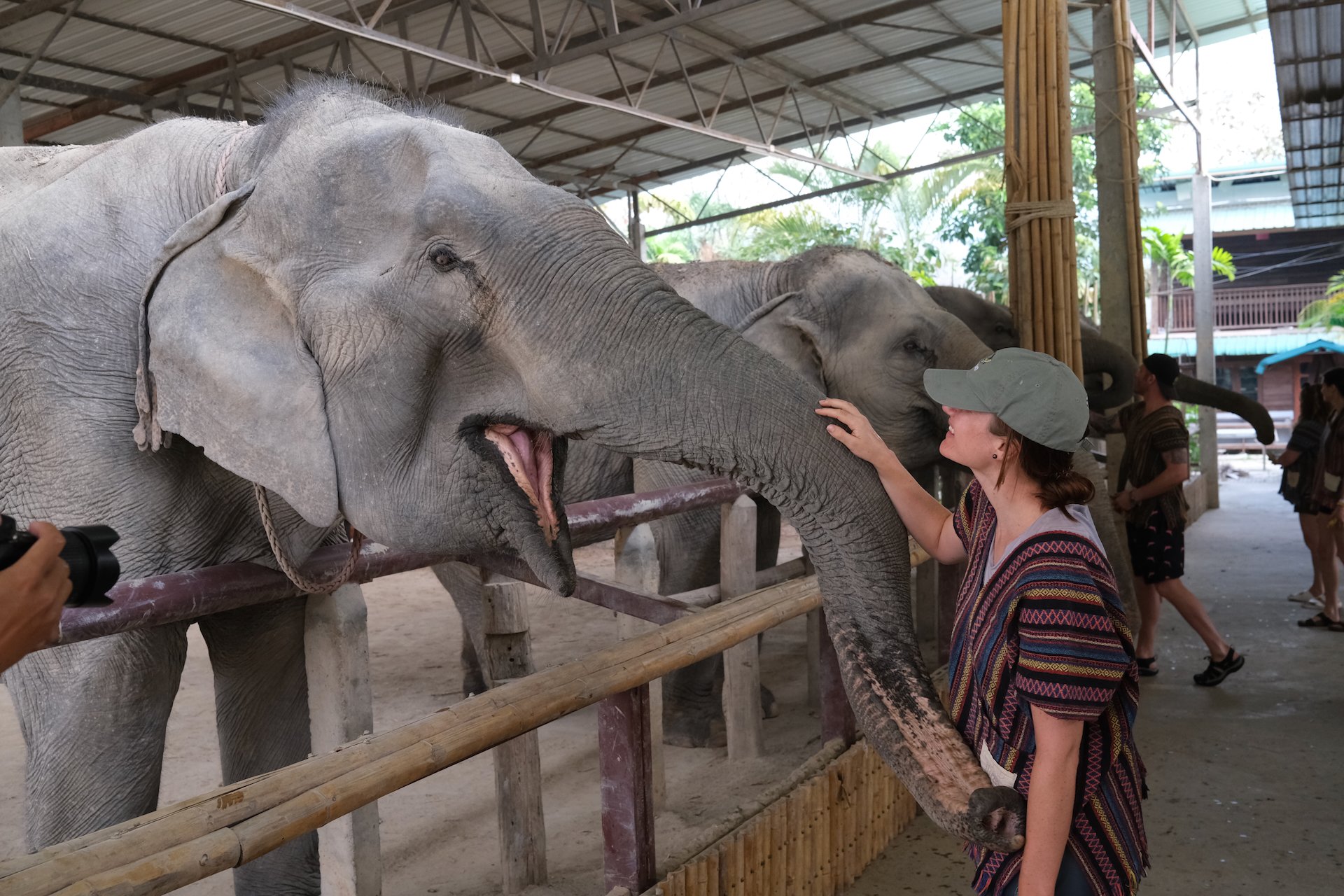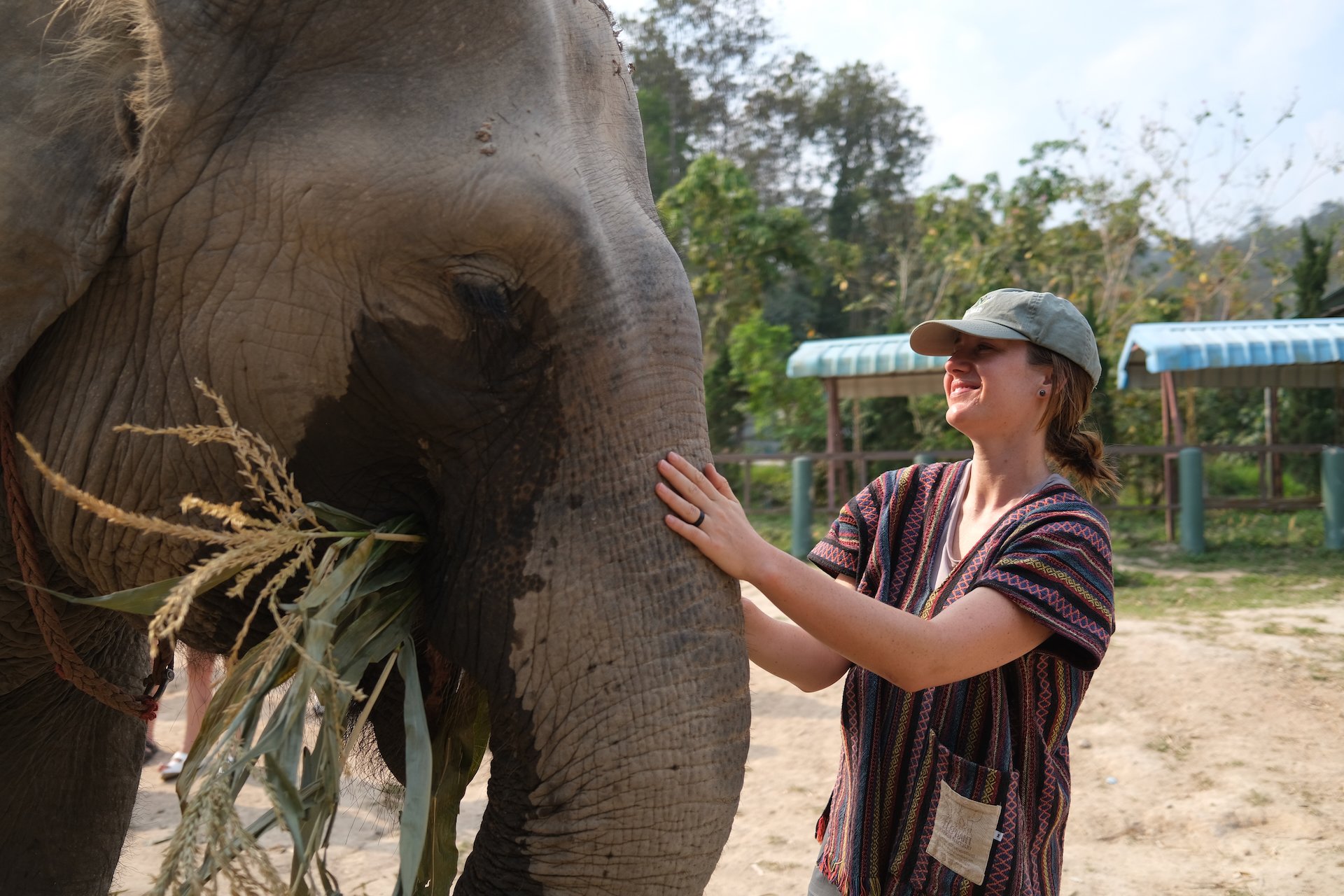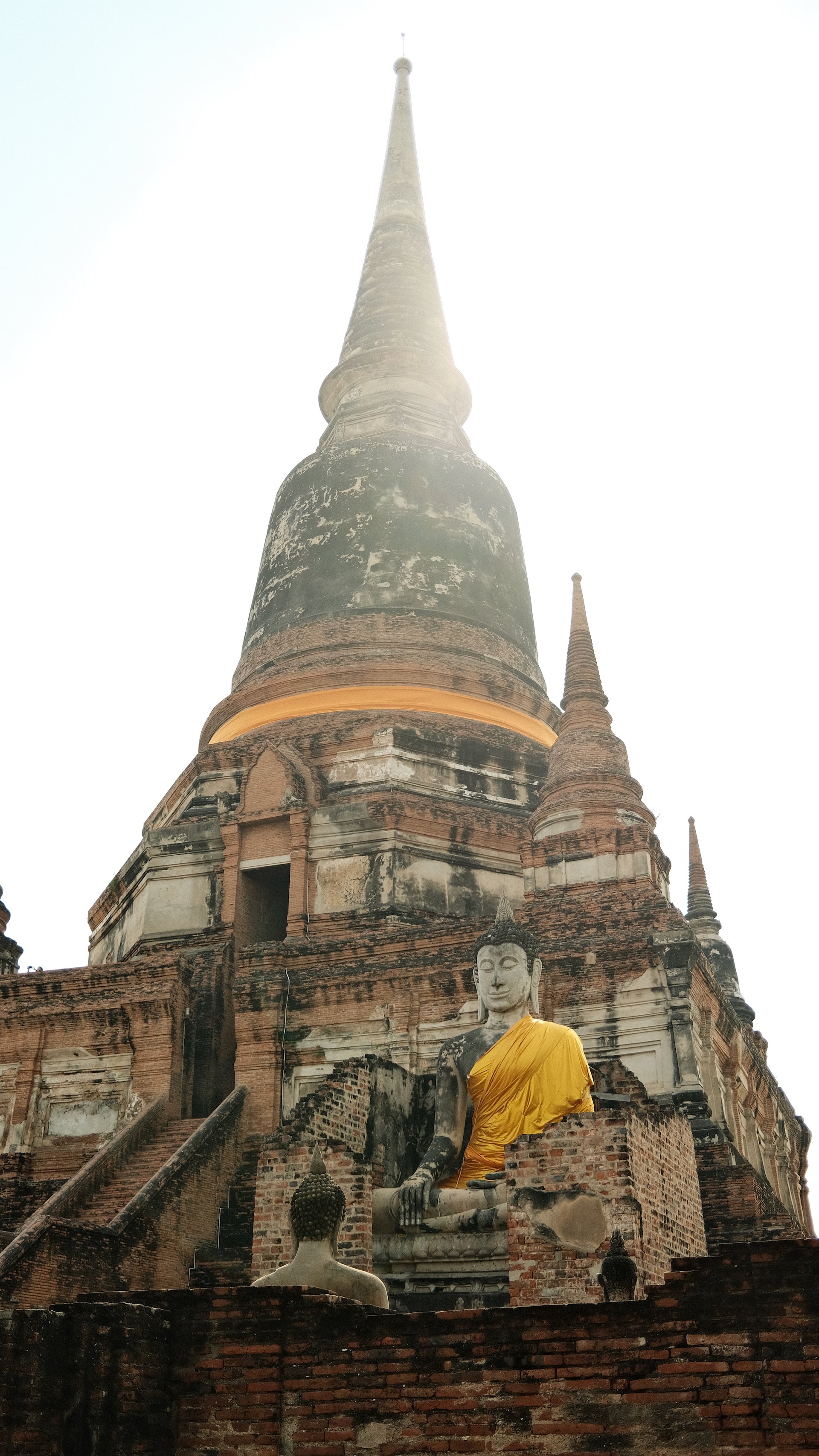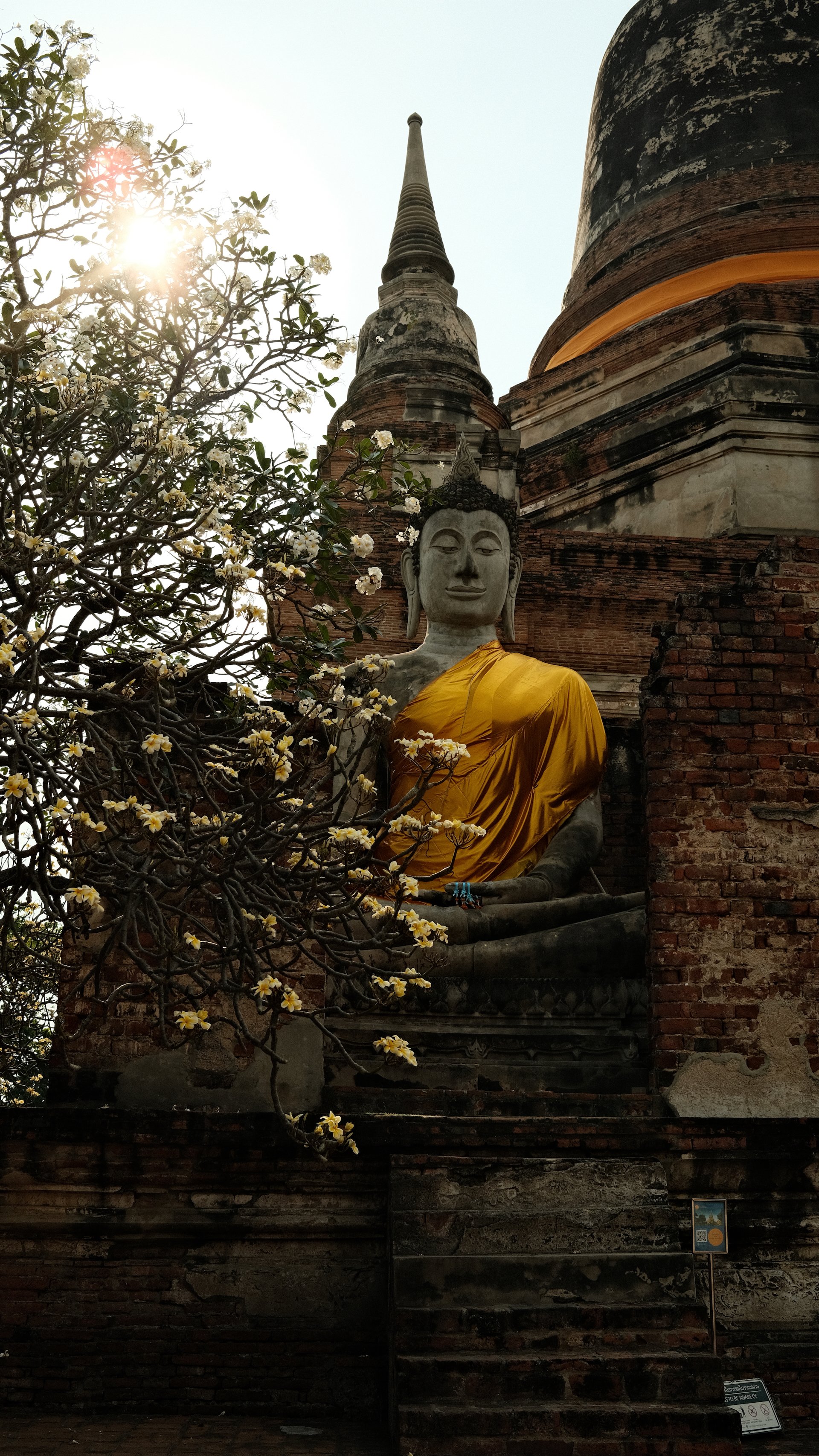Northern Thailand: Bangkok to Chiang Mai
After our 2 week bike touring trip from the southern half of Thailand, we arrived in the capital city of Bangkok for a weekend to recuperate and reorganize before continuing north toward Chiang Mai.
Bangkok
We stayed in Bangkok with one of Caitlin’s fellow Olmsted Scholars who moved to the city with his family 6 months previously. Joe kindly welcomed us into his home, showed us around the city, and allowed us to properly clean our clothes in a real washing machine. Our first stop was to the large outdoor Chatuchak Weekend Market. Joe’s local experience and Thai translation was helpful while navigating the public transit system and picking out snacks or souvenirs at various vendors.
For our second day of exploration, we booked a longboat tour of Bangkok. We motored up the Chao Phraya River enjoying views of the royal palace, ornate temples, and the city skyline before splitting off down smaller tributaries. Our boat driver expertly maneuvered the 60ft long boat through increasingly narrow canals, navigating blind corners and traffic with oncoming boats. We eventually arrived at a floating village and street market where our guide introduced us to fried banana fritters and a local apricot-like fruit. Rather than immediately jumping back on the boat, our guide decided to take us on a longer walking tour away from the touristy areas through the local neighborhood. We appreciated the well-rounded perspective gained from seeing this working class community first hand.
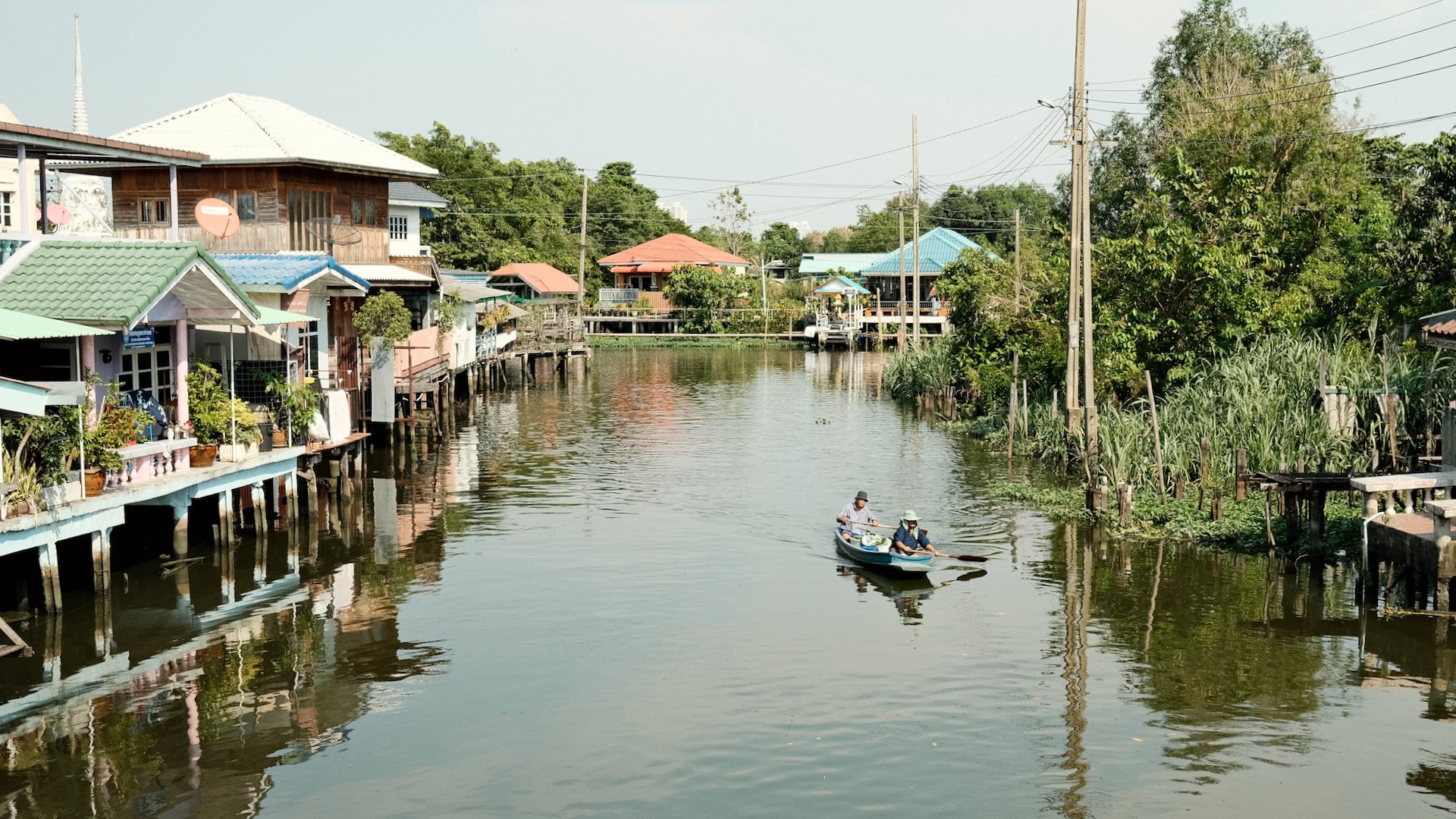
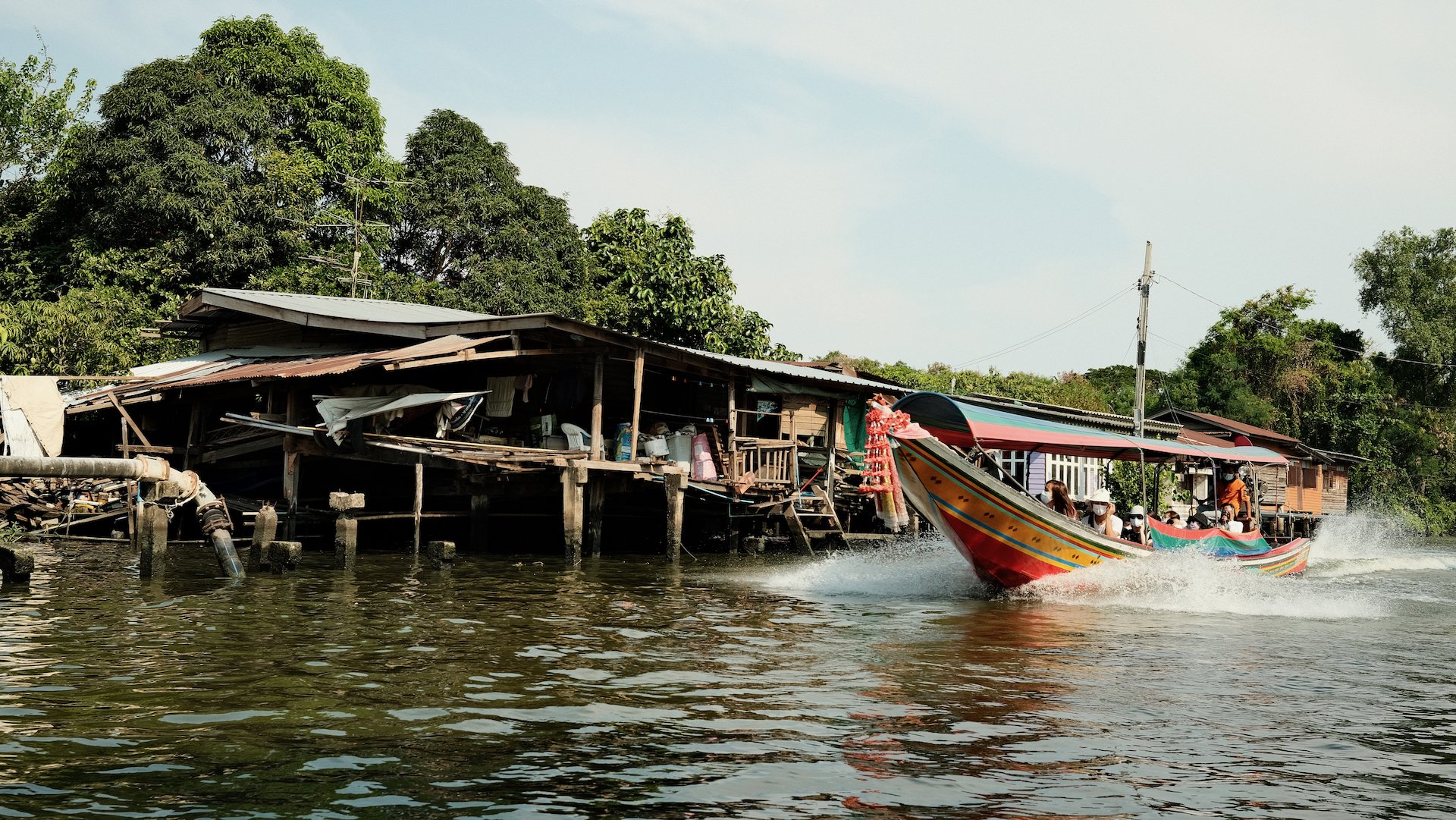

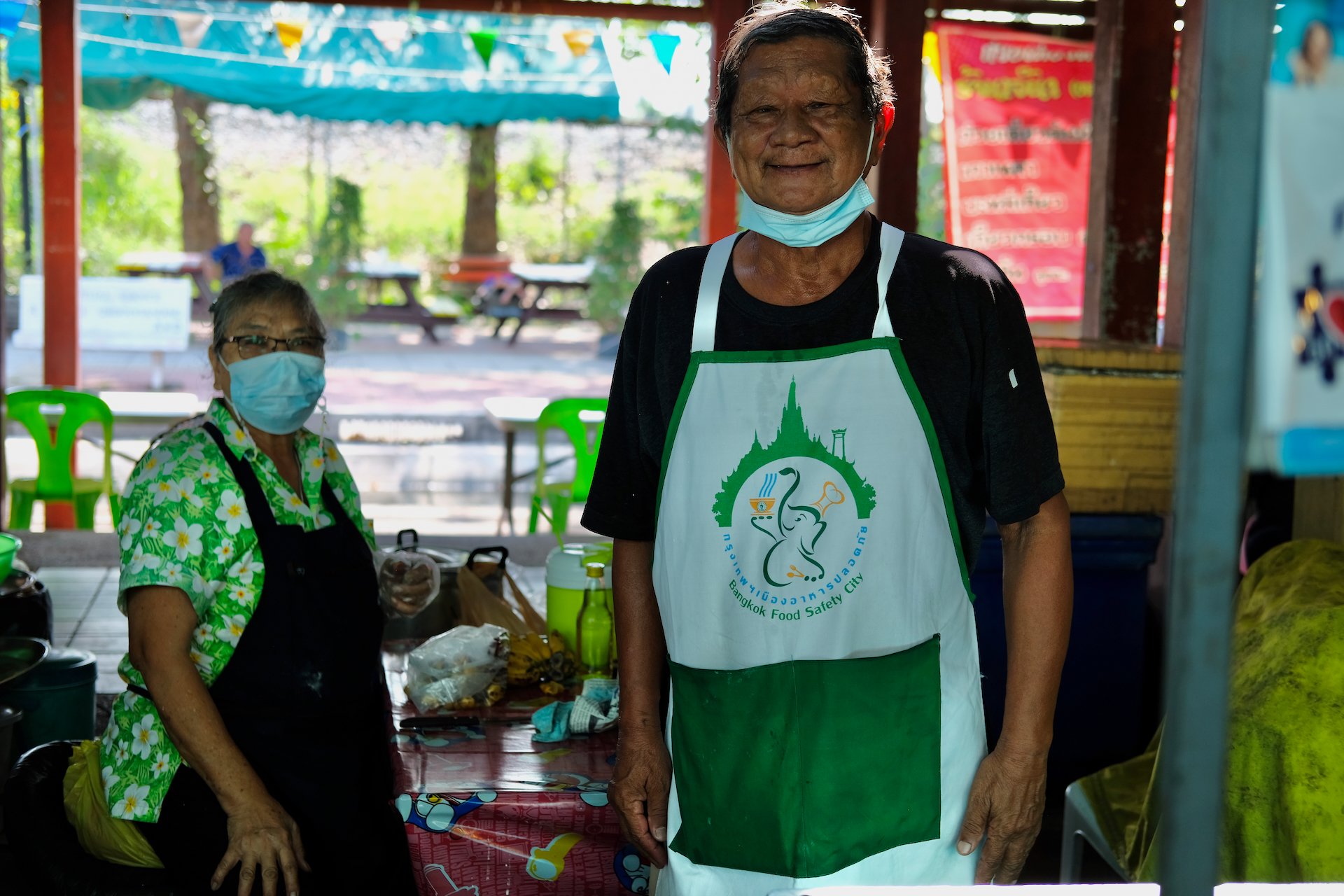
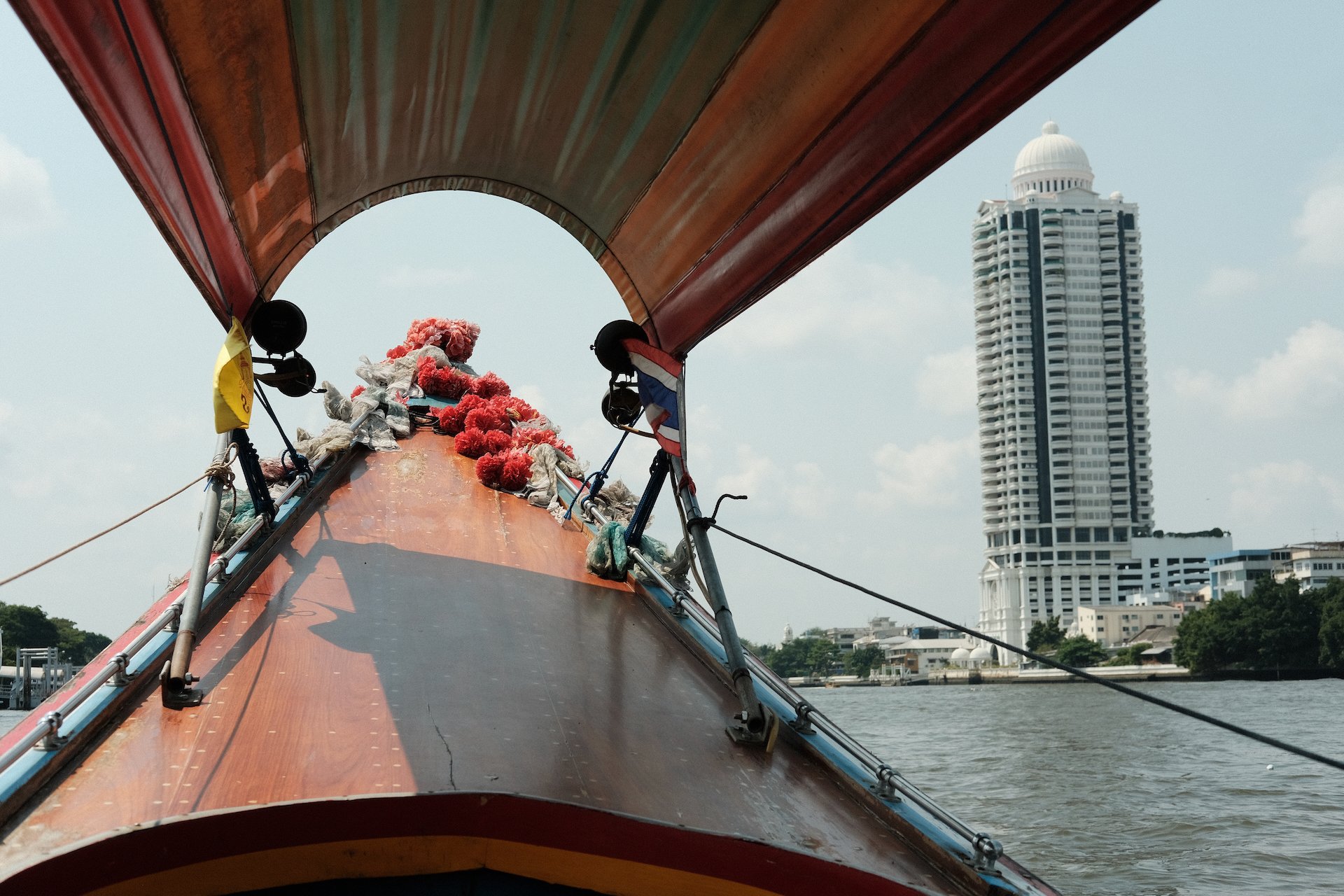
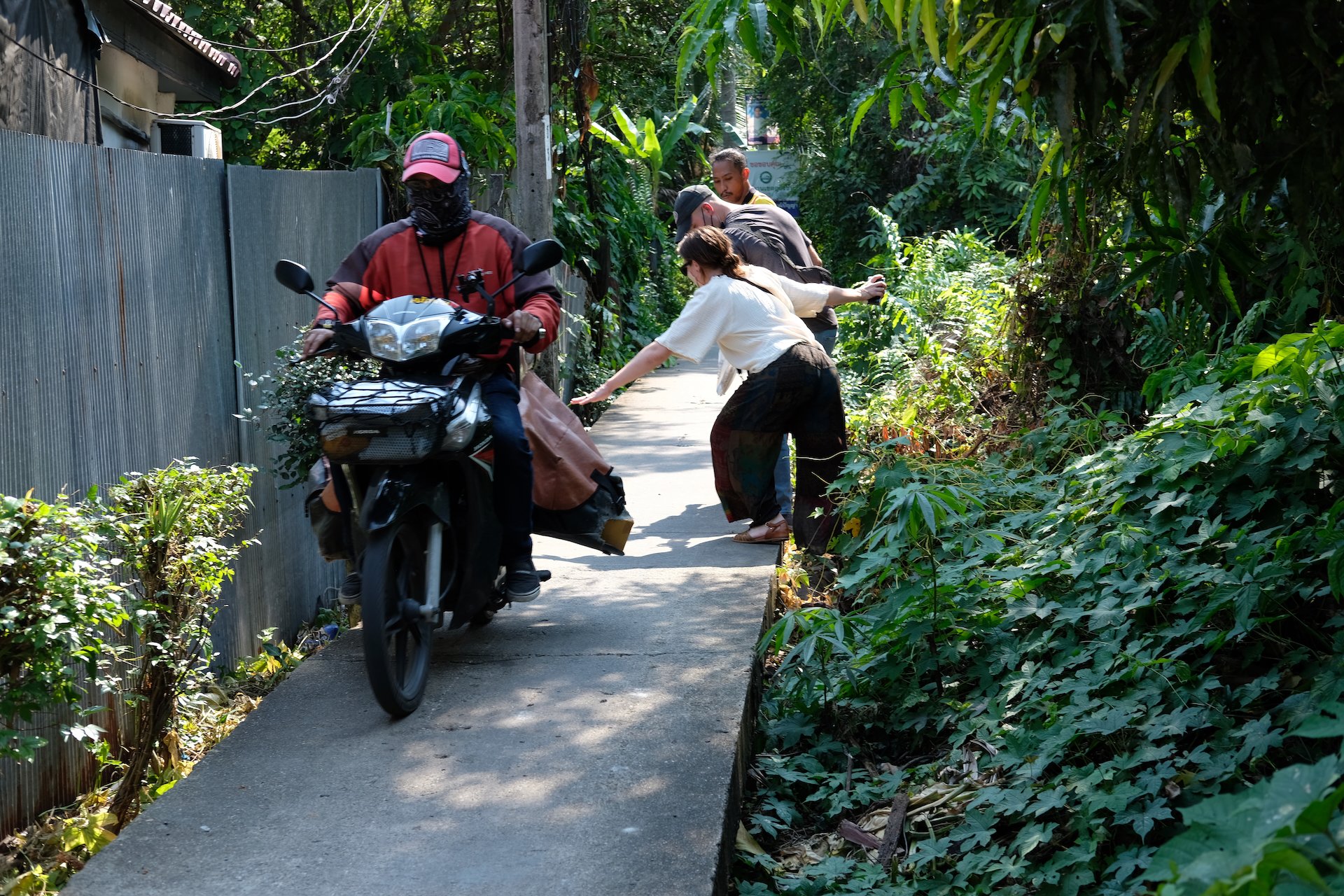
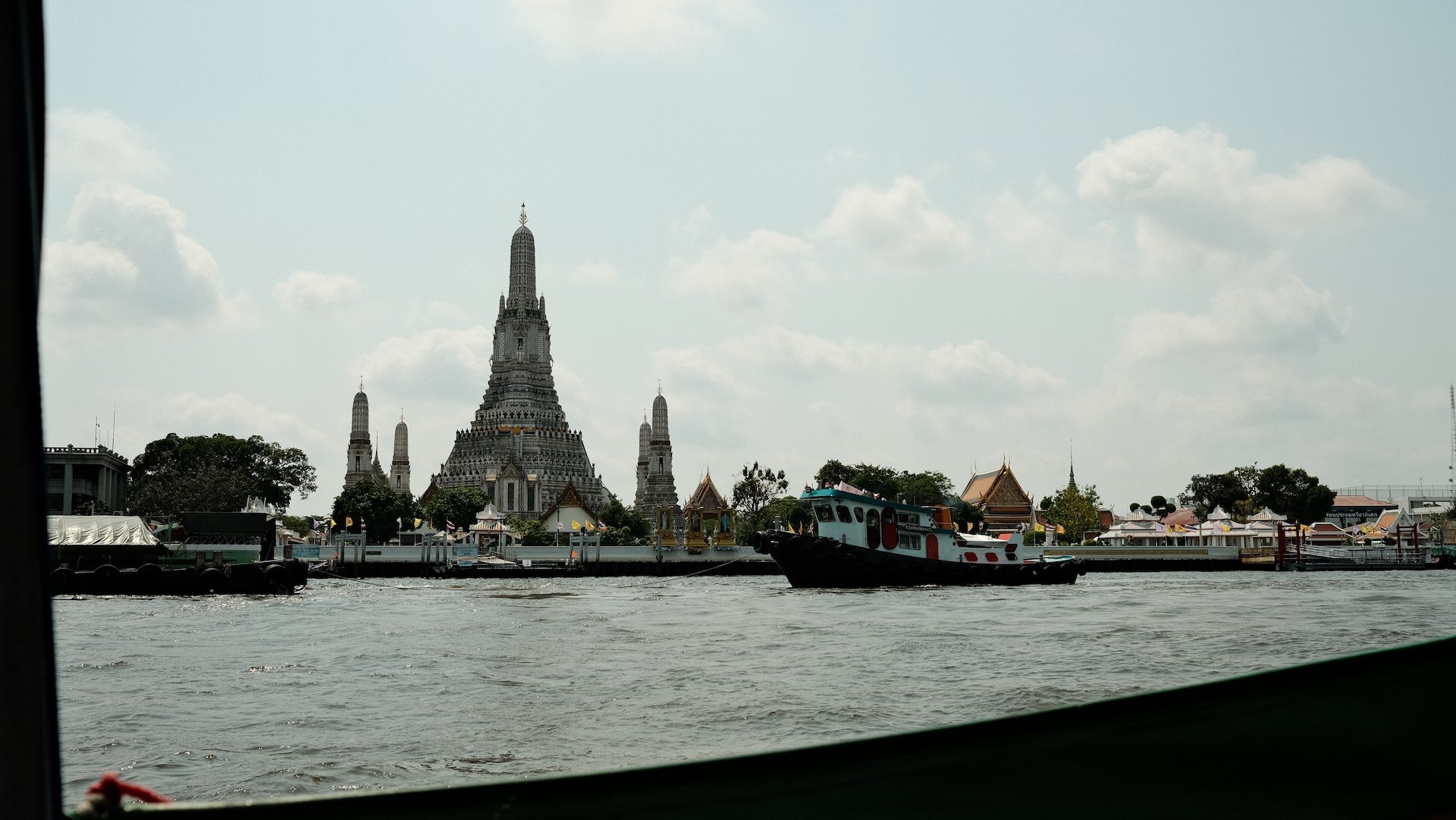
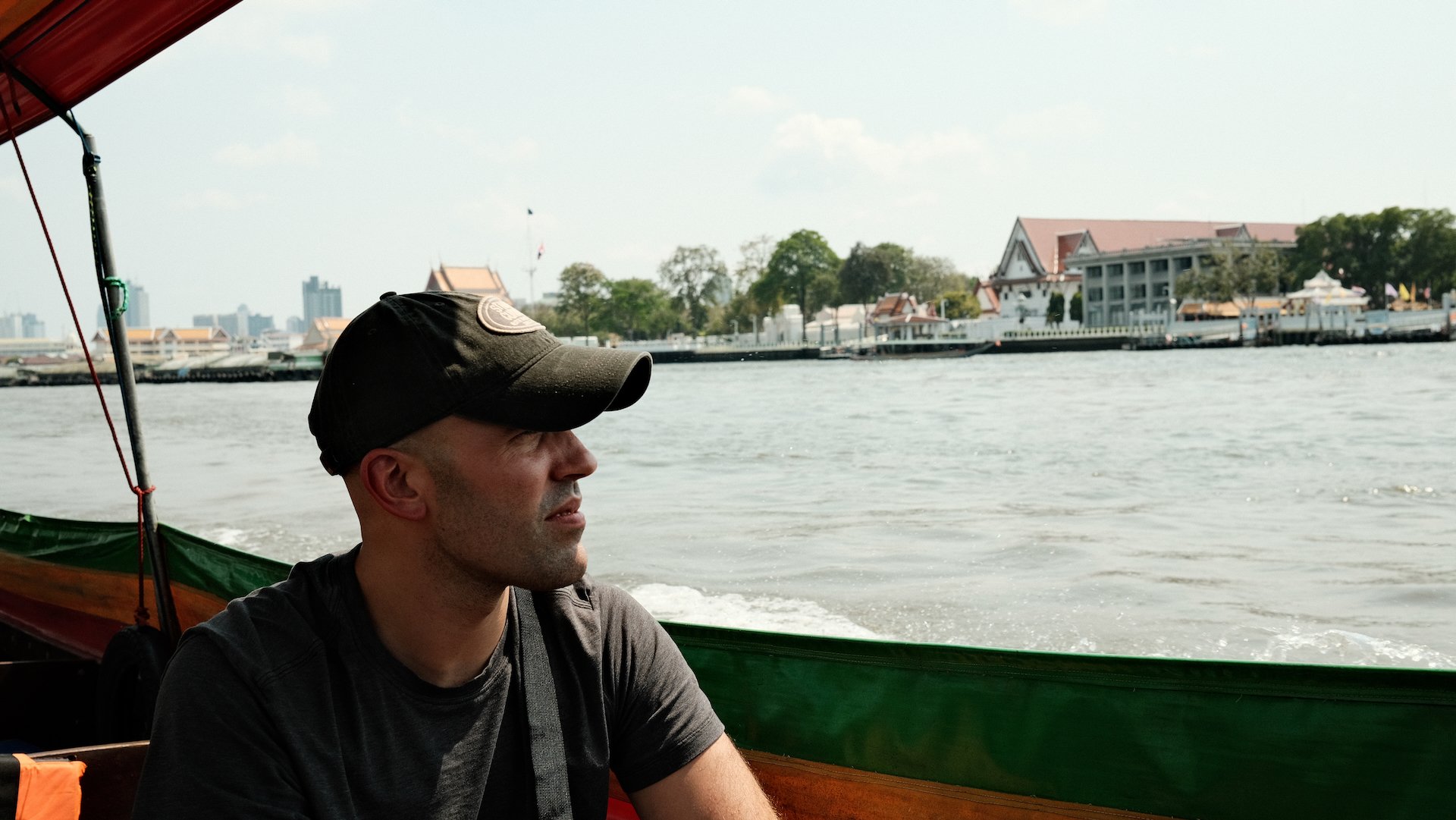
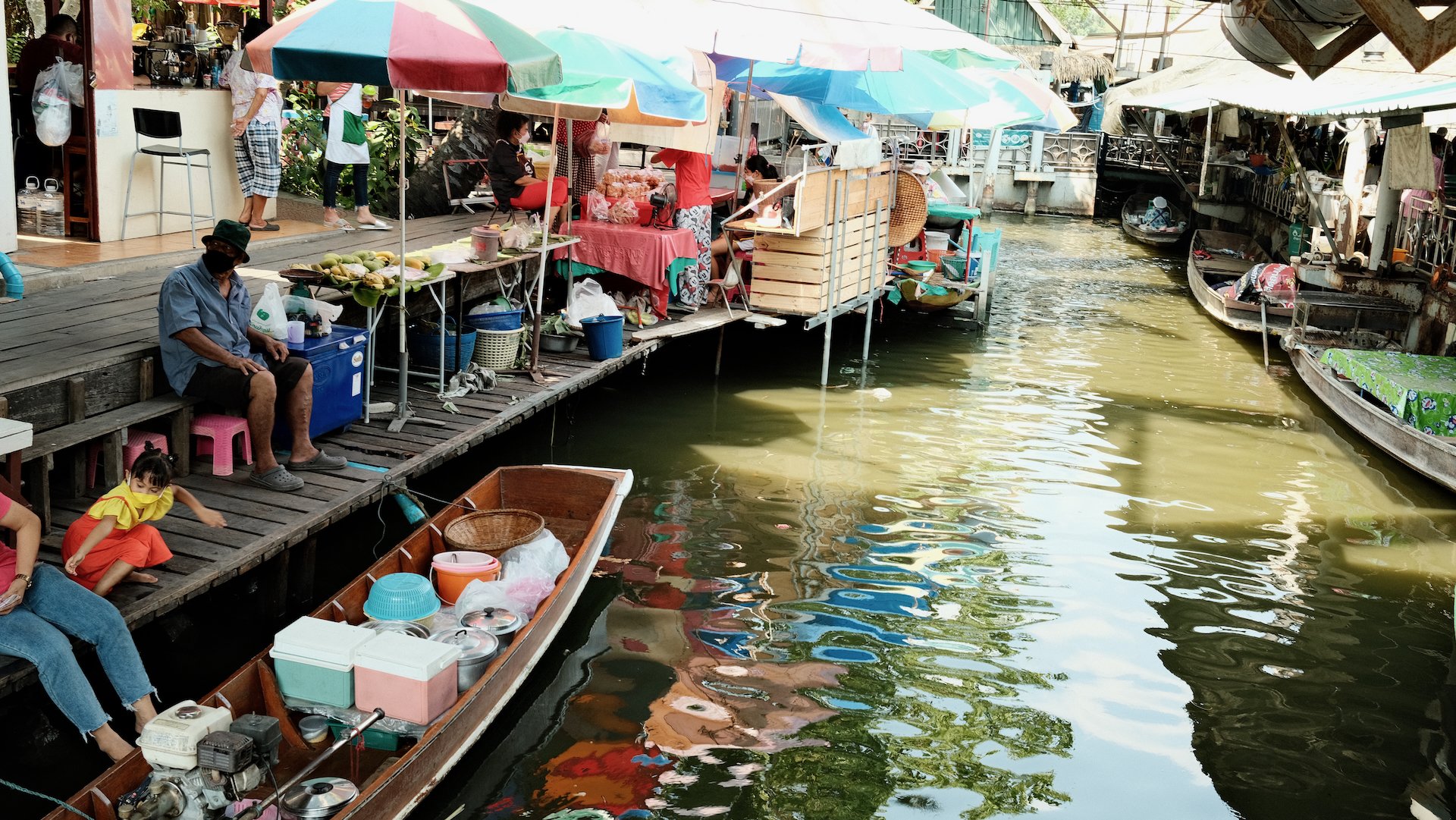
We spent our final day in Bangkok preparing for the bike trip to Chiang Mai. Unlike the previous 2 weeks of cycling, our trip to Chiang Mai was booked with a local tour guide company. This meant that we would enjoy all the benefits and comforts of a fluent guide, support van, ample snacks and hydration, and fully coordinated logistics for our hotels and meals.
Ayutthaya
Bang Pa-In Royal Palace
The first landmark on our trip north was the ancient kingdom of Ayutthaya, pronounced “ah-YOU-tee-uhh.” Before Bangkok became the capital of modern day Thailand, the region was the center of power and culture for the kingdom. Today, visitors see examples of that rich history in both meticulously maintained palaces and preserved ruins.
Bang Pa-In Royal Palace was the first stop of our tour. This palace was the summer residence of King Rama V (who reigned from 1868-1910) and his many wives. First constructed in 1632, the original complex fell into disuse and was abandoned. We learned that the king rebuilt and expanded the facility in a European style inspired by his own travels to France. The western influence can be seen clearly today in the style of the architecture and gardens.
After the palace tour, we changed into bike clothes for a riding tour of several Buddhist temples, or “Wats”. We visited 4 temples built by the kings of Ayutthaya between 1350 and 1630. We learned about the prominent characteristics of Thailand’s Buddhist traditions including the circular pointed “stupa” towers and the depiction of the Buddha that appeared to have a more feminine figure, or at least gender ambiguous. Our guide explained that the gender ambiguity is meant to signify that all beings have the potential to become a buddha. We spent the rest of the day cycling from one Wat to the next, scaling weathered volcanic stone steps, and taking lots of photos.
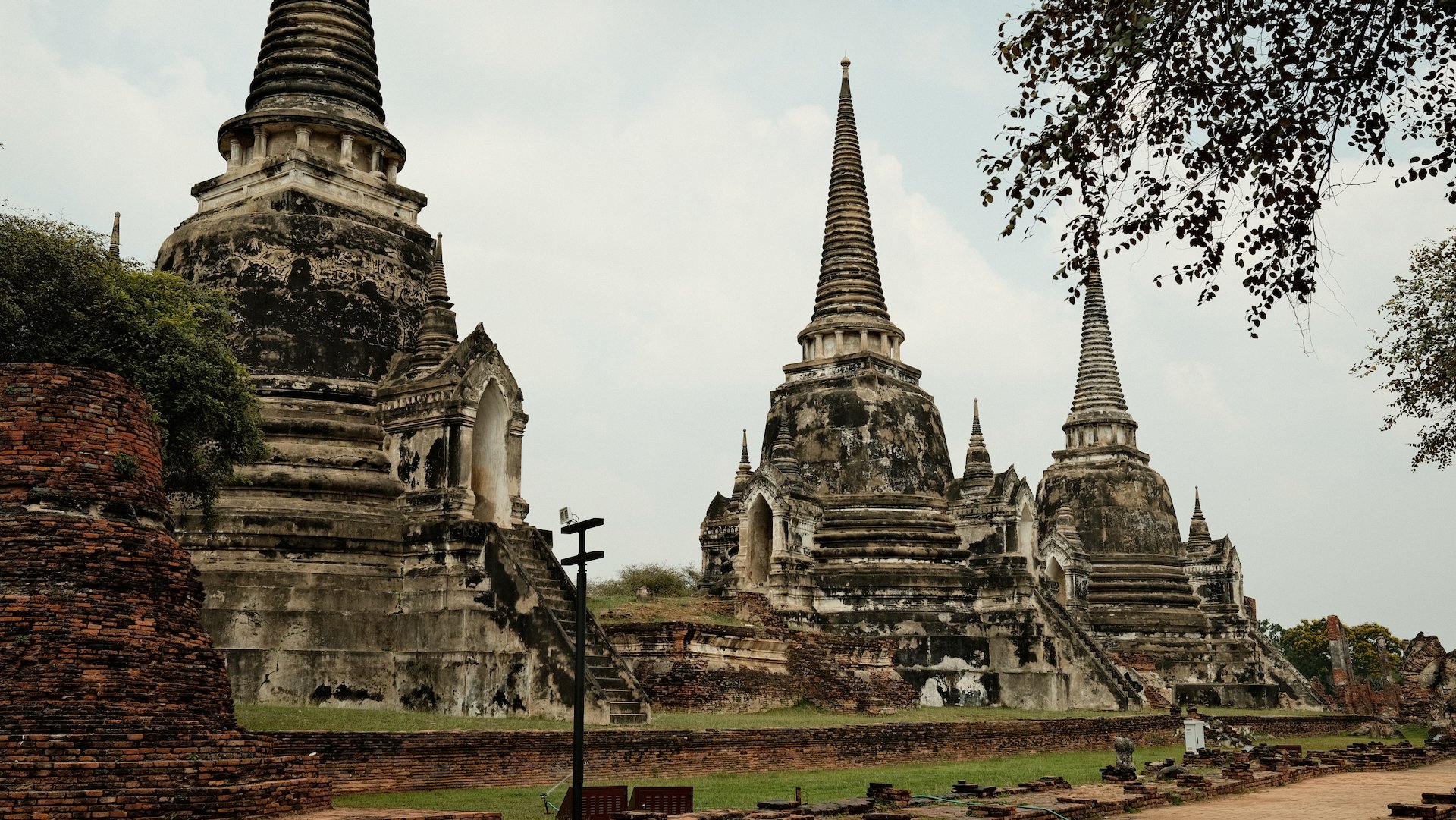
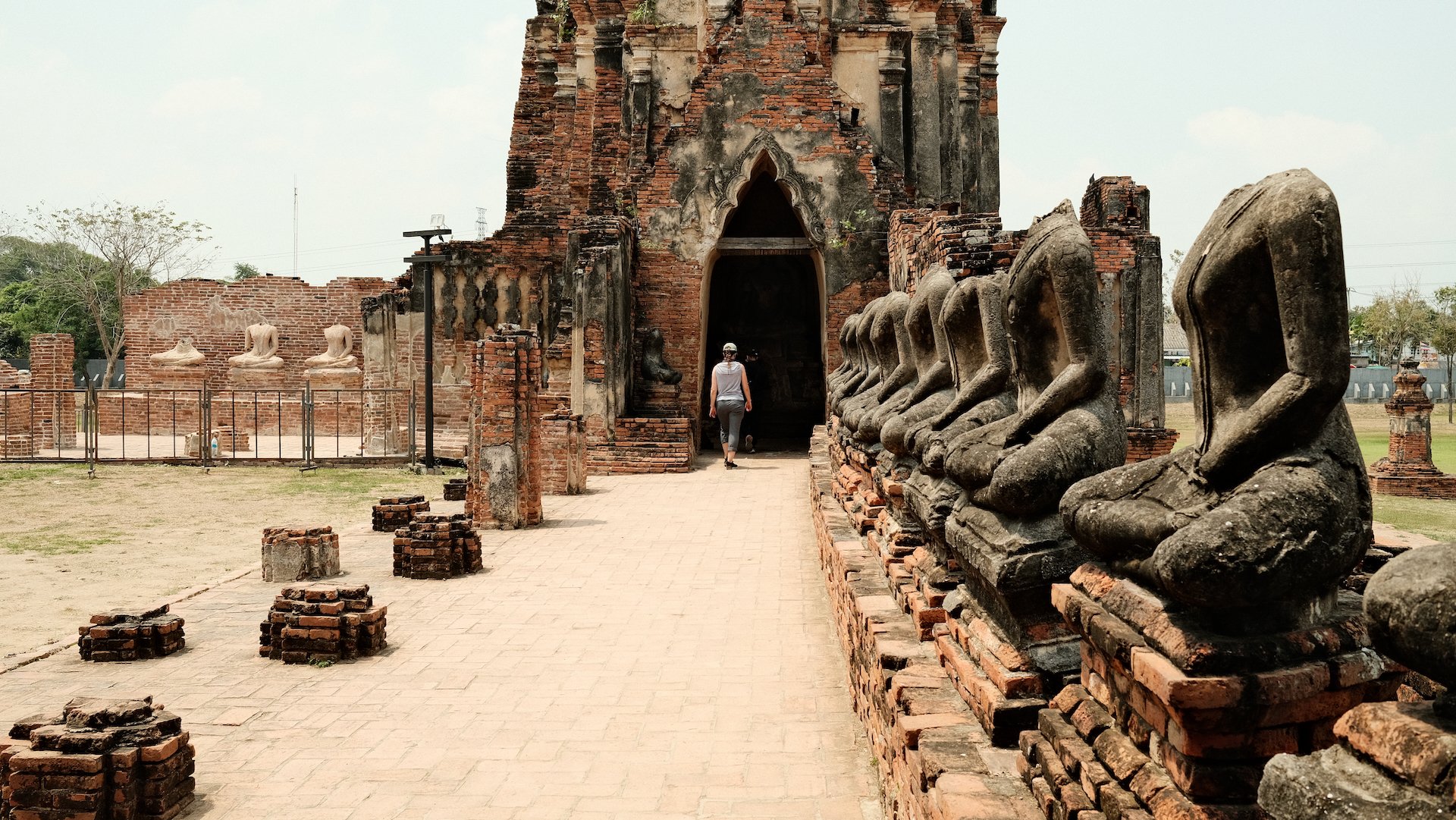
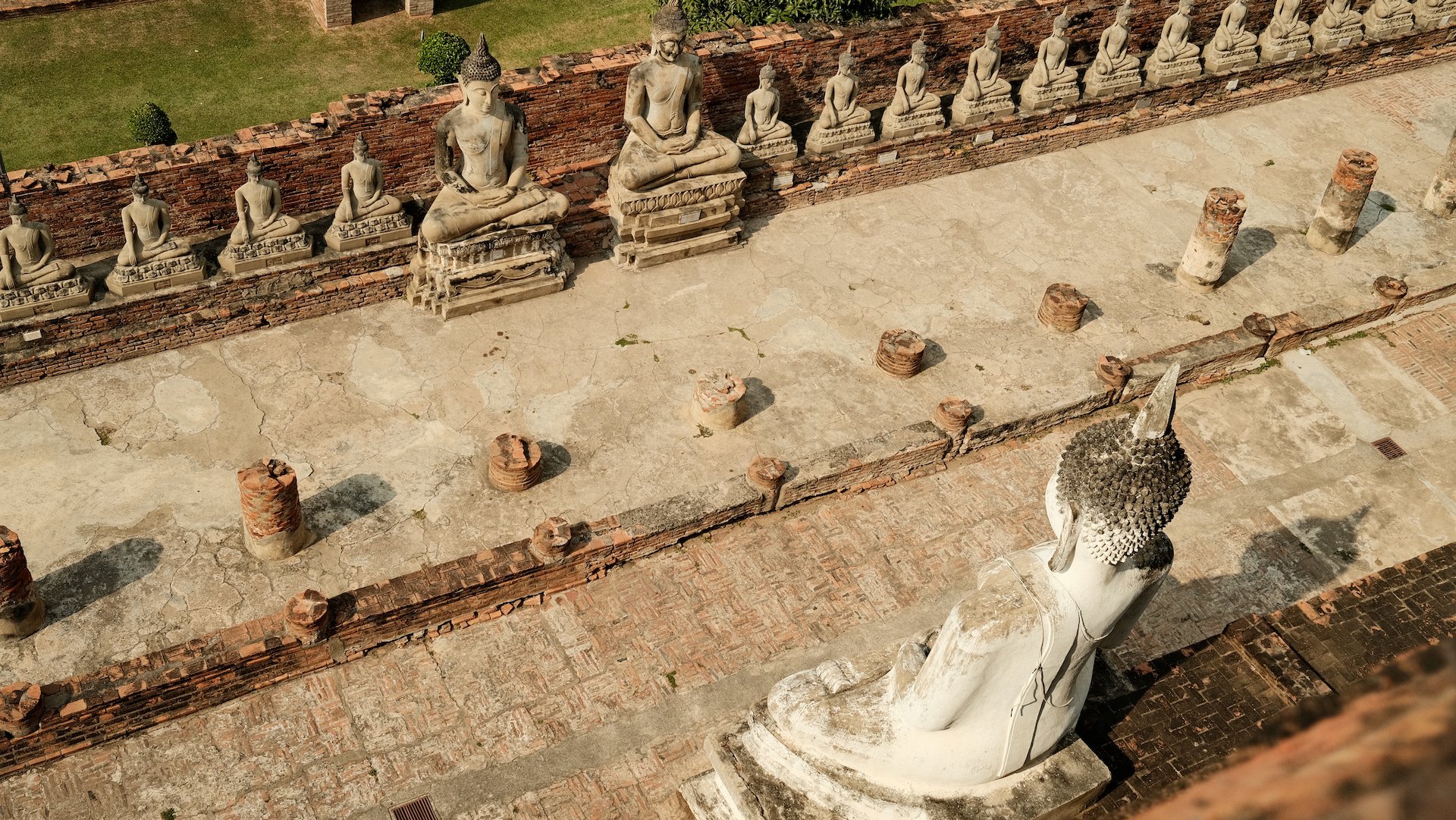
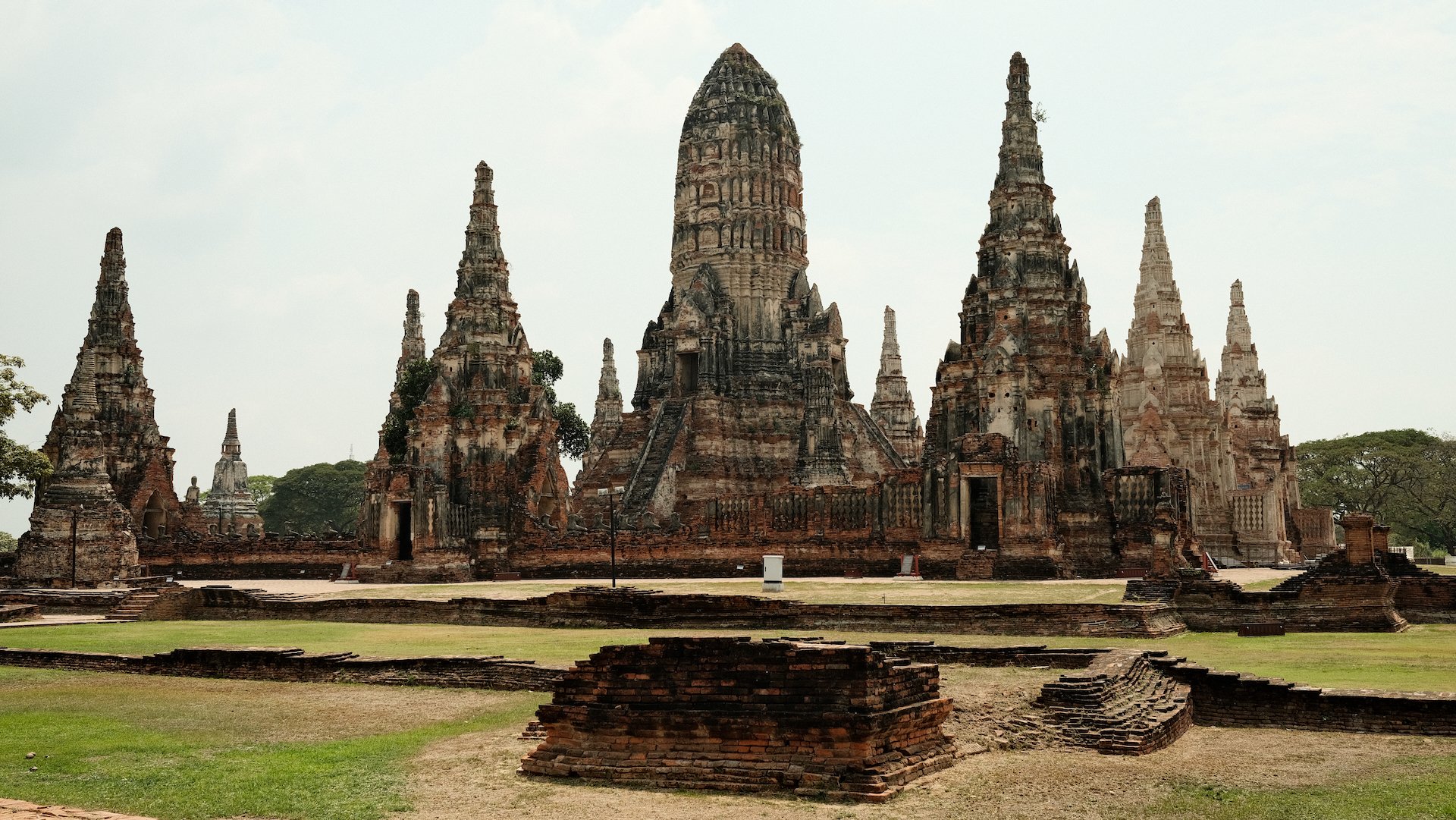

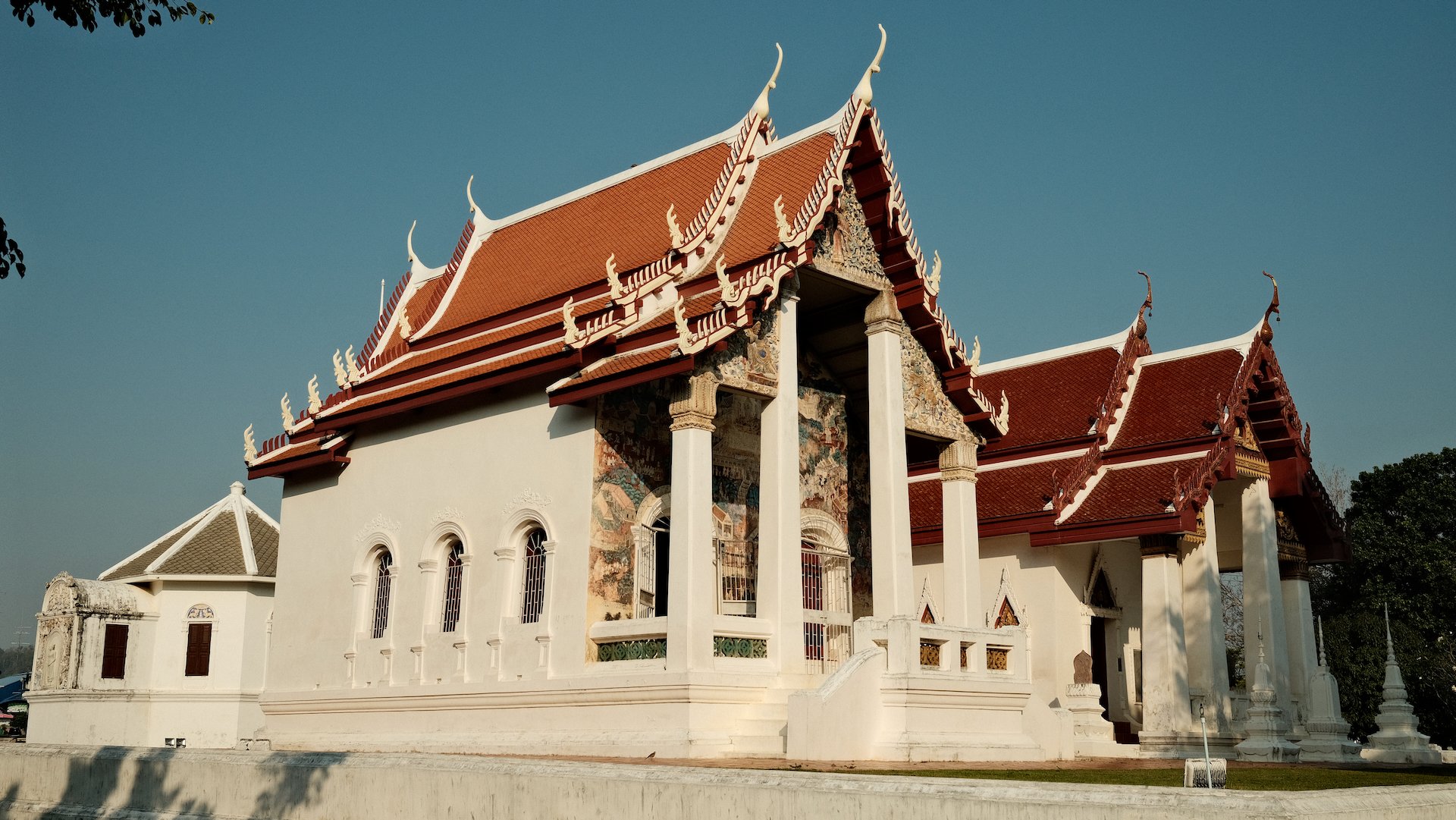
Sukhothai
We continued riding north for several days into the heart of the former kingdom of Sukhothai. Predating both Thailand and Ayutthaya, historians credit Sukhothai as the origin of the “Thai” in Thailand. We also learned that kings of Sukhothai and Ayutthaya eventually decided to unite their respective kingdoms into a single country. It is celebrated today as a shrewd diplomatic decision.
This part of the country is beautiful and rural. We spent 2 days making our way north along the Yom River, crossing back and forth over the river frequently to hit small villages and markets along the way. We rode through scenic paths, rice fields and, in one town, along the riverfront mainstreet where elaborate preparations were underway for the upcoming Thai New Year. The three day event is a massive water celebration where no person is left undrenched. Our guide said that the Thai people were especially excited to celebrate the annual tradition since it had been canceled due to Covid for the past 2 years.
Our tour of the Sukhothai Historical Park was truly a highlight of our entire time in Thailand. The temple complex is a series of tree-lined roads, sprawling lawns, and lakes. We slowly pedaled our way down the shady roads, soaking up the views in serene peacefulness because it felt like we were the only visitors enjoying a private tour. In the center of the grounds are the stunning ruins of the main temple. The architecture of the round towers is a unique example of the early Hindu influences from Cambodia (notice the tower resemblance to Angkor Wat).
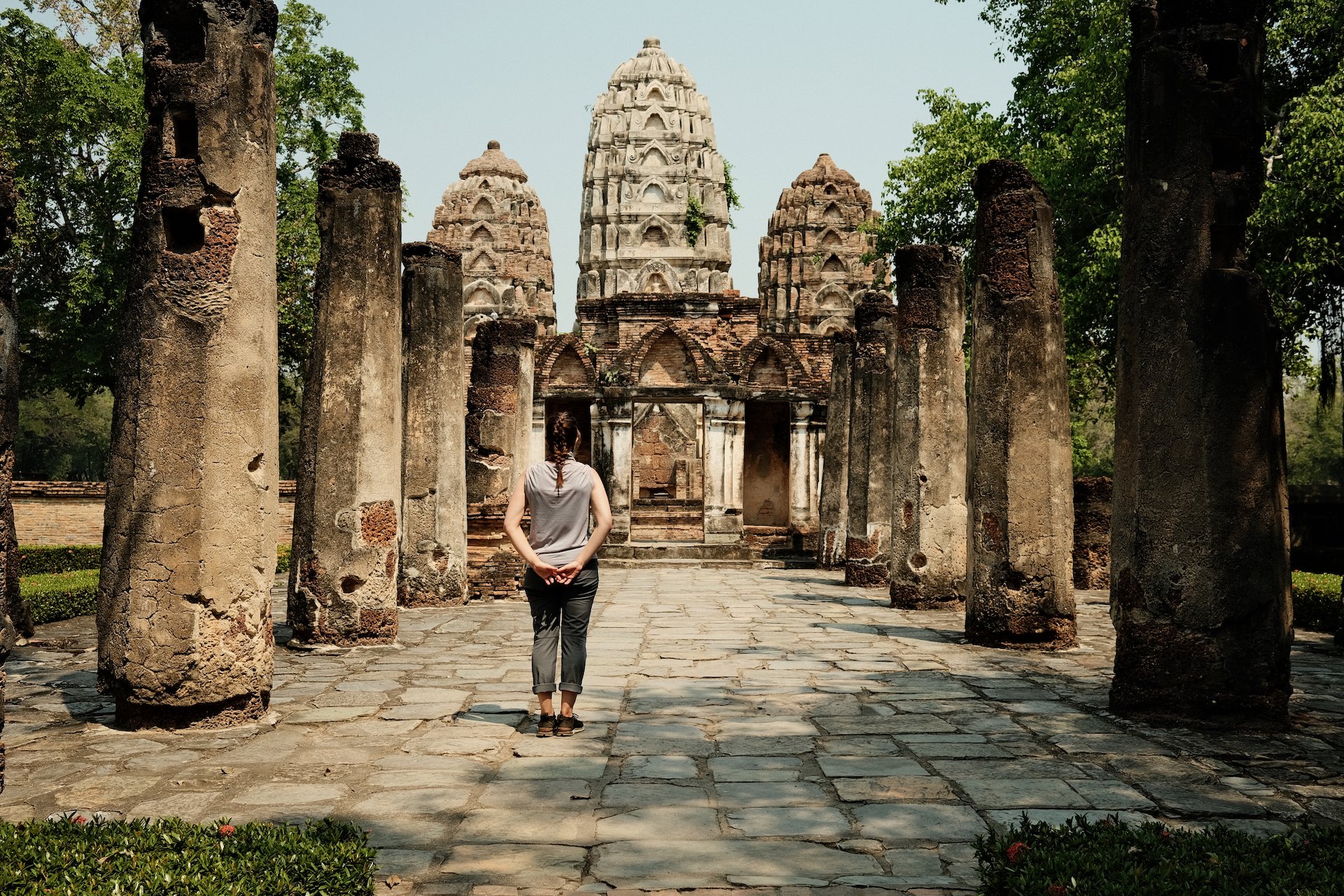
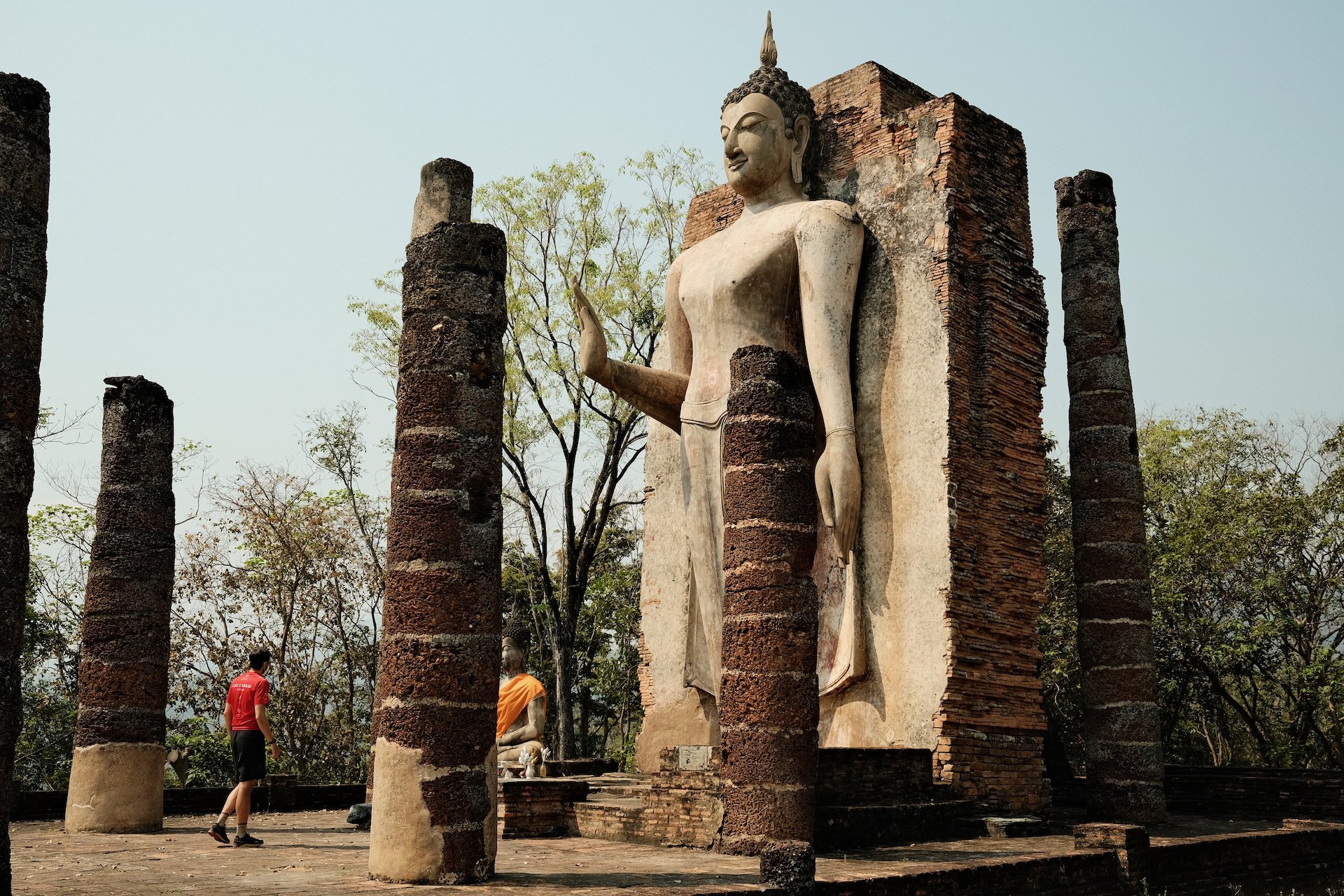
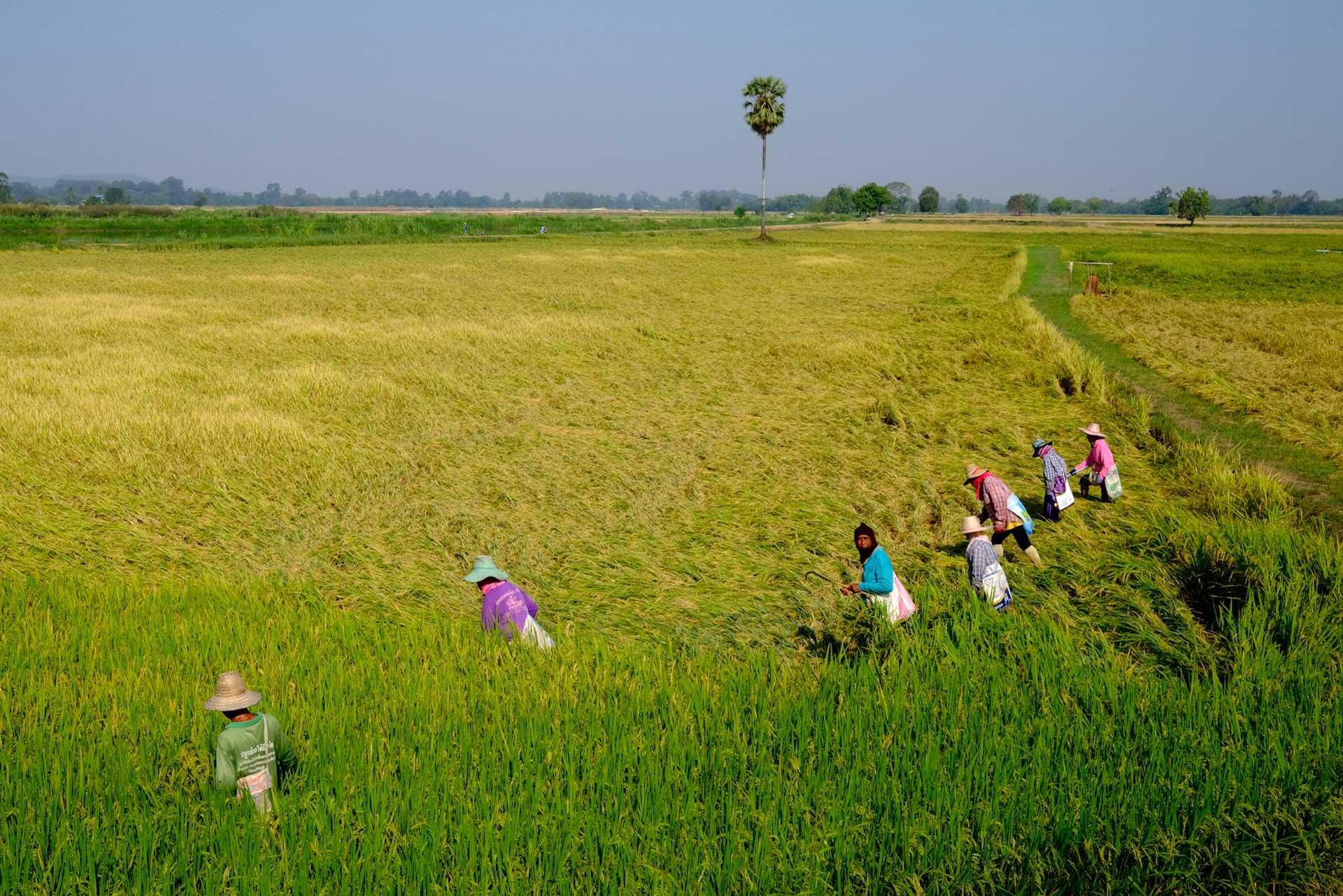
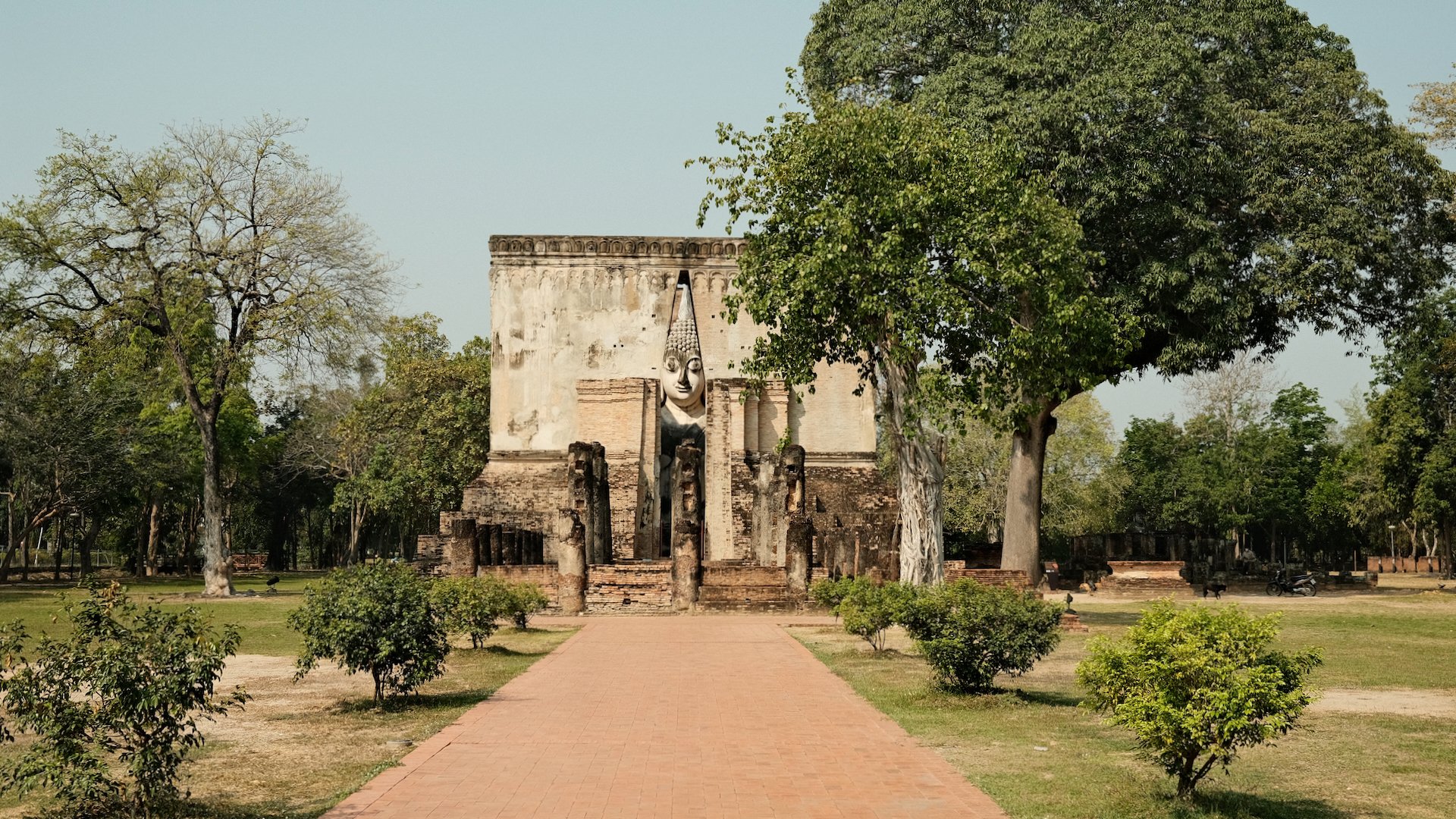
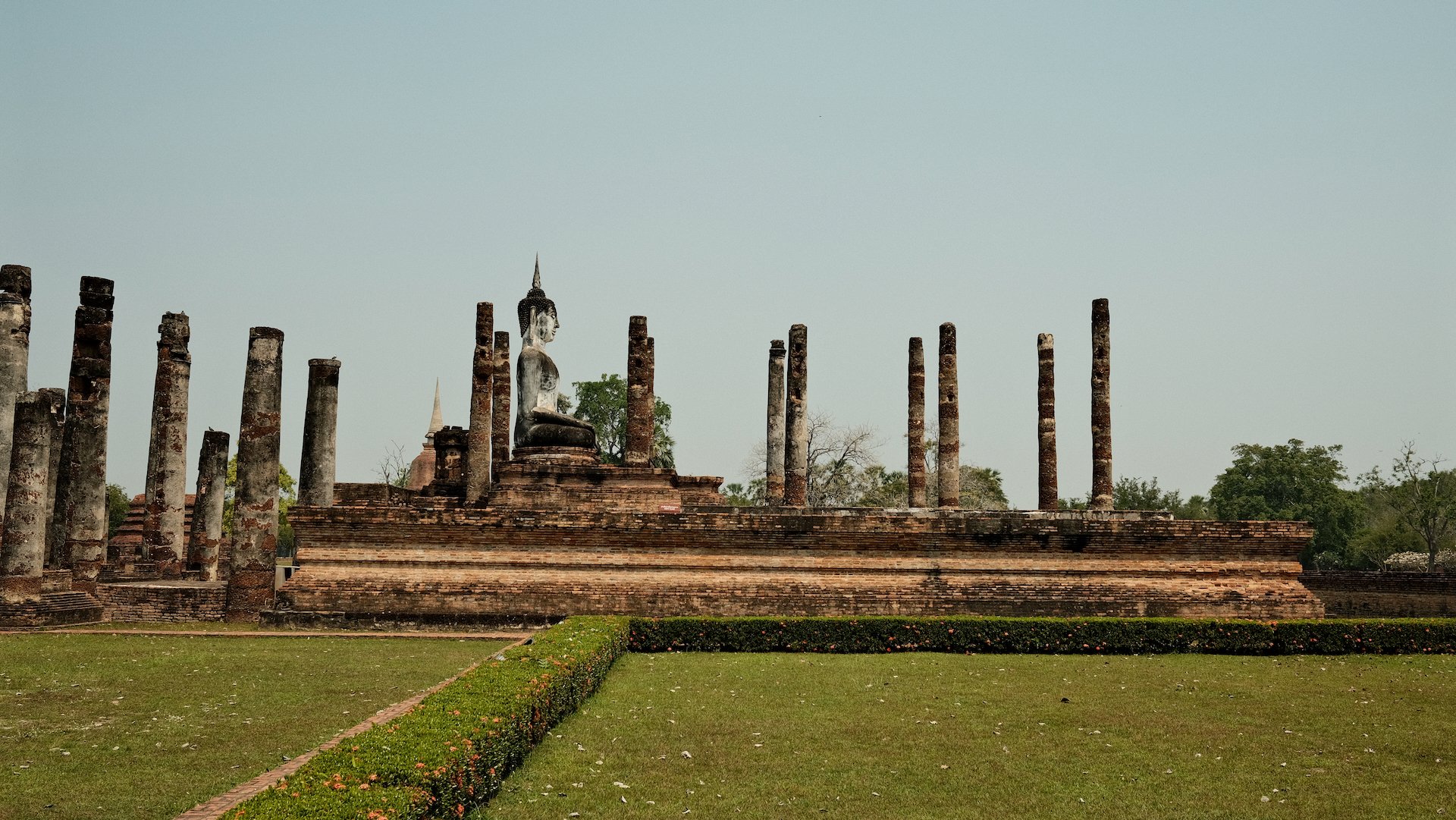
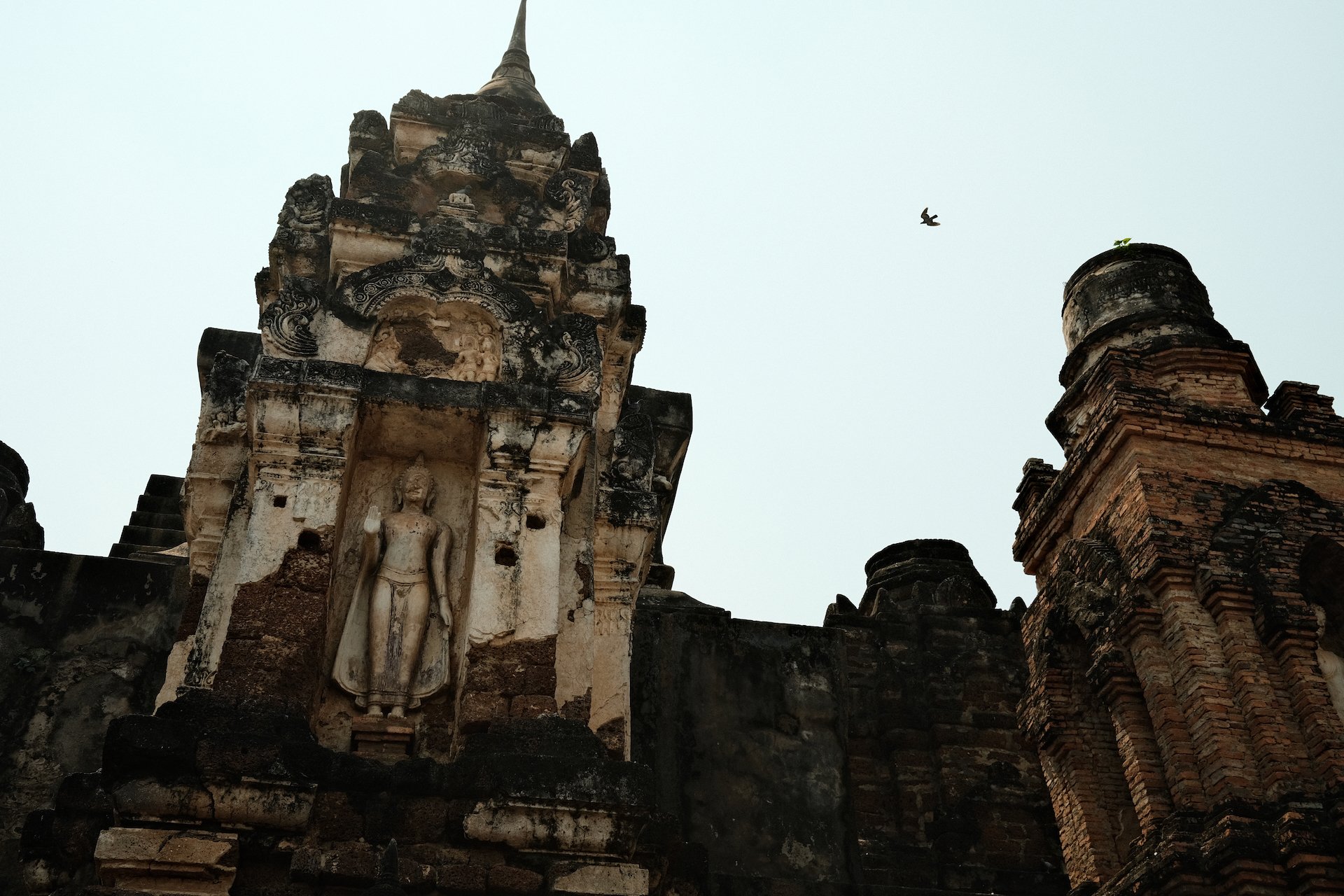
Chiang Mai
The city of Chiang Mai and the surrounding region is rich with history and culture. Riding on a winding riverside path thick with vegetation, we cruised past meticulously maintained artisanal homes and small family farm groves. Our tour guide called for a stop where we could see some machinery and a flurry of activity from the road. We discovered a family of beekeepers who were in the middle of harvesting a big batch of honey. Apparently excited to have a couple curious westerners take interest in their operation, they immediately gave us a big spoonful of the fresh honey to taste. After we all posed for a group photo, we were only allowed to depart if we agreed to accept their generous gift of almost 2 liters of fresh honey!
We arrived at our hotel in Chiang Mai just after lunch which gave us a few hours to rest before heading back out for a sunset ride. Our tour guide led us around to all of the city’s major landmarks including the remains of the central wall and Wat Chedi Luang. The next morning, we continued the tour of Chiang Mai without bikes. We jumped in the support van to drive up the mountain to see two iconic temples. Although less well known, the smaller Wat Pha Lat was our favorite because it was so naturally built into the mountainside jungle. The larger Wat Doi Suthep was impressive for its massive golden stupa, however the air was too thick from smog and pollution to enjoy the views.
With our guided trip officially concluded, we had a couple more days in Chiang Mai to plan our own activities. We went out in the evening to check out the highly recommended night market. The Sunday night market is located in the very center of the old city. We strolled through the sprawl of vendors, enjoying the cool evening, and looking for souvenir gifts. Our attention was captured by many of the products made by local crafts people.
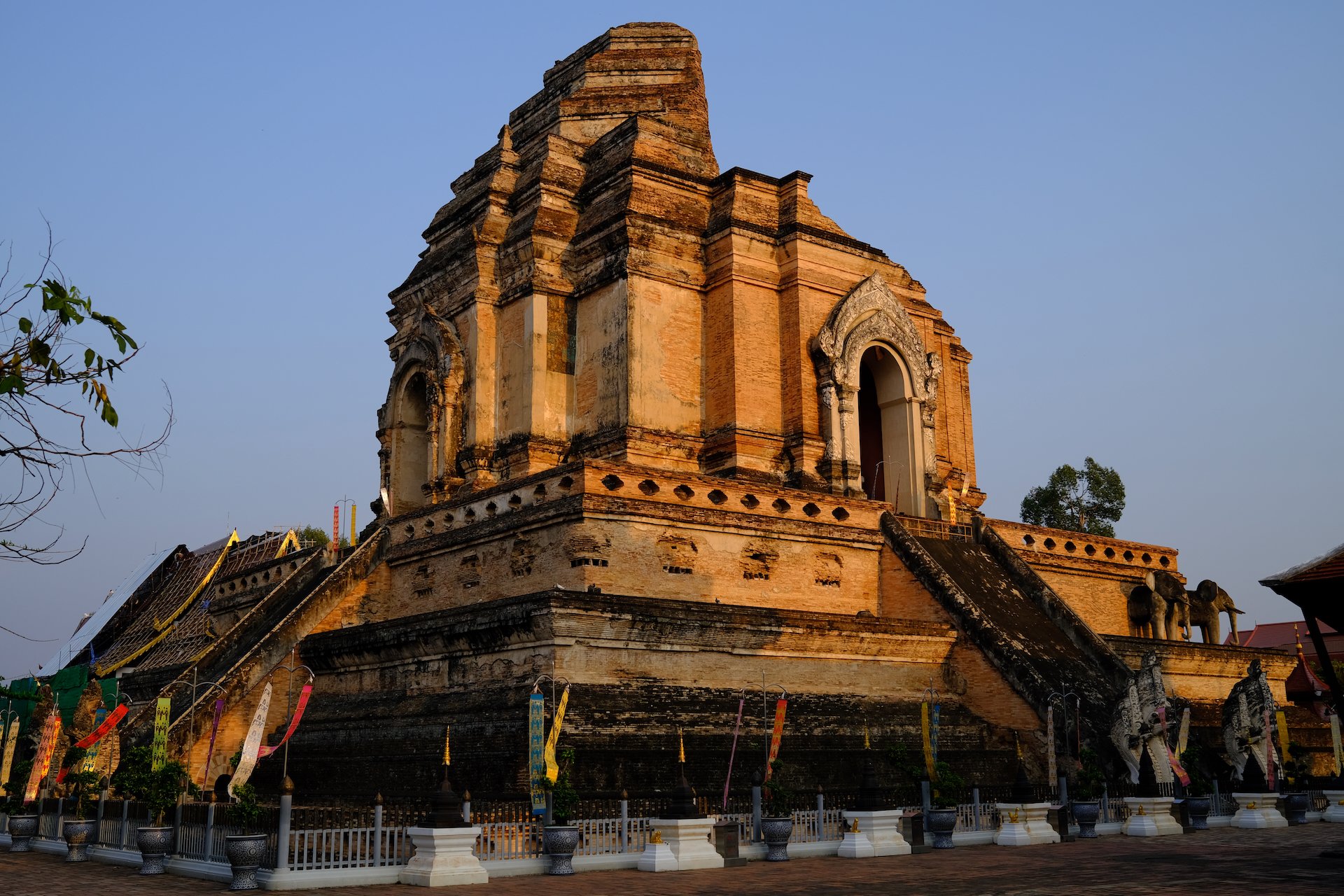
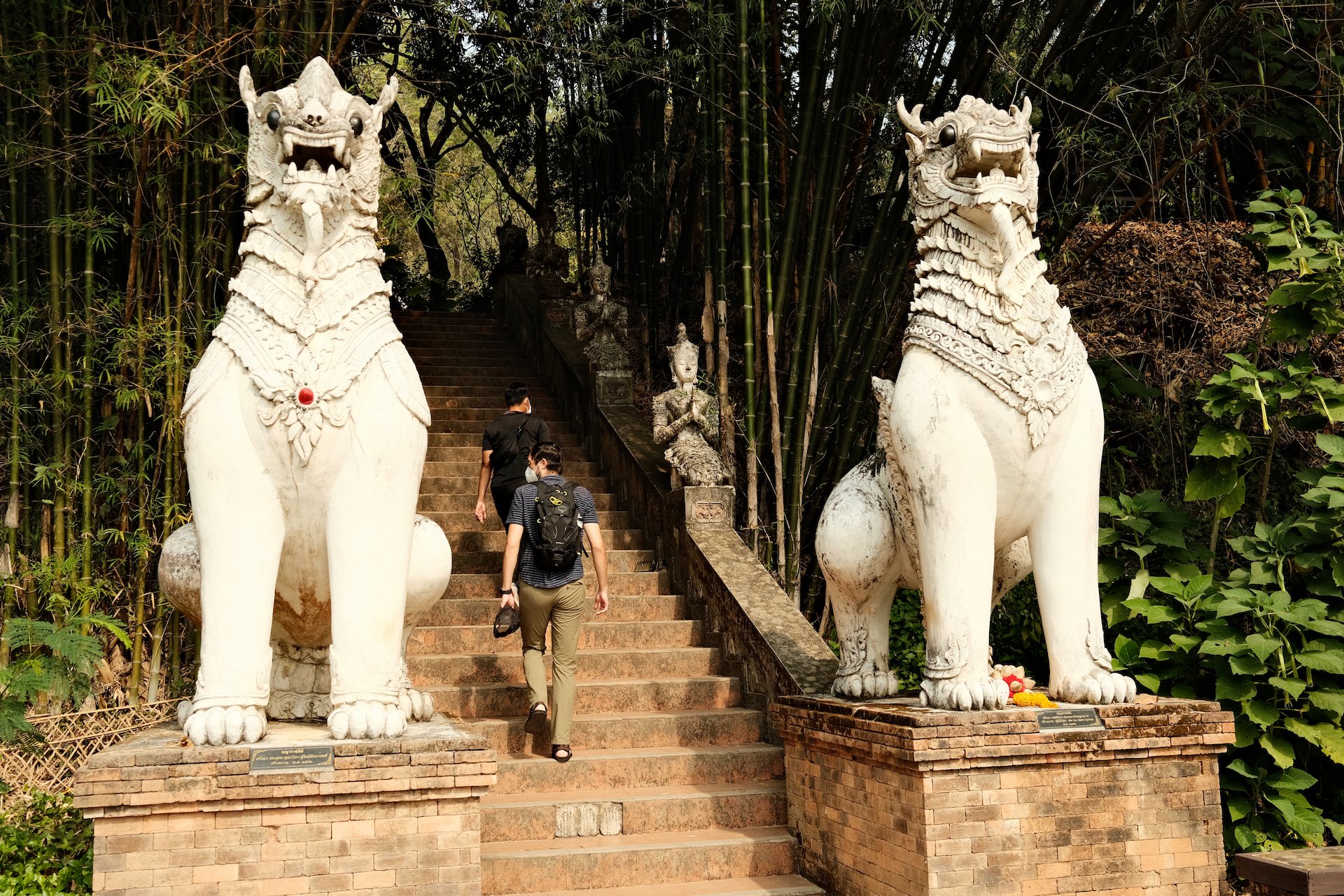
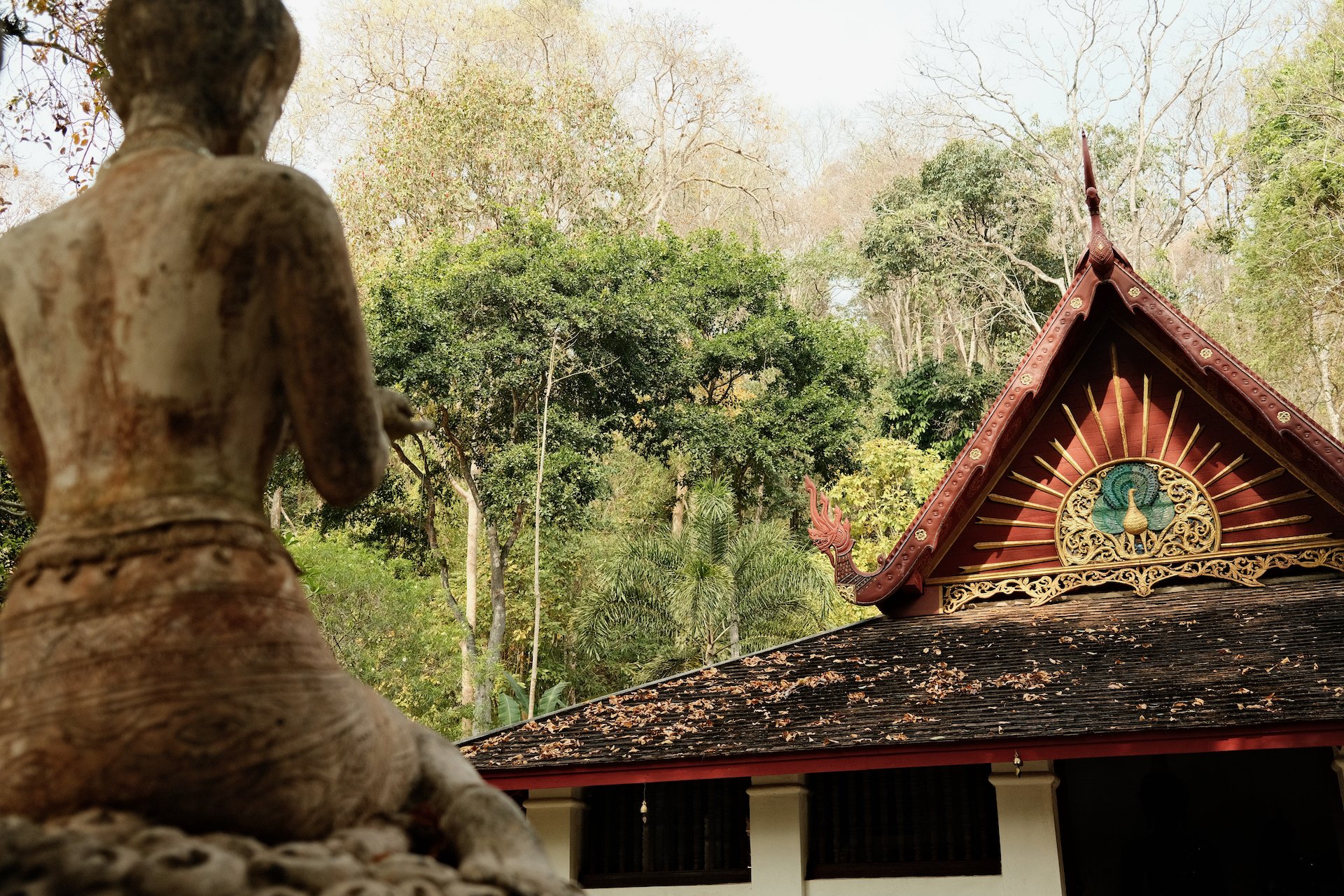

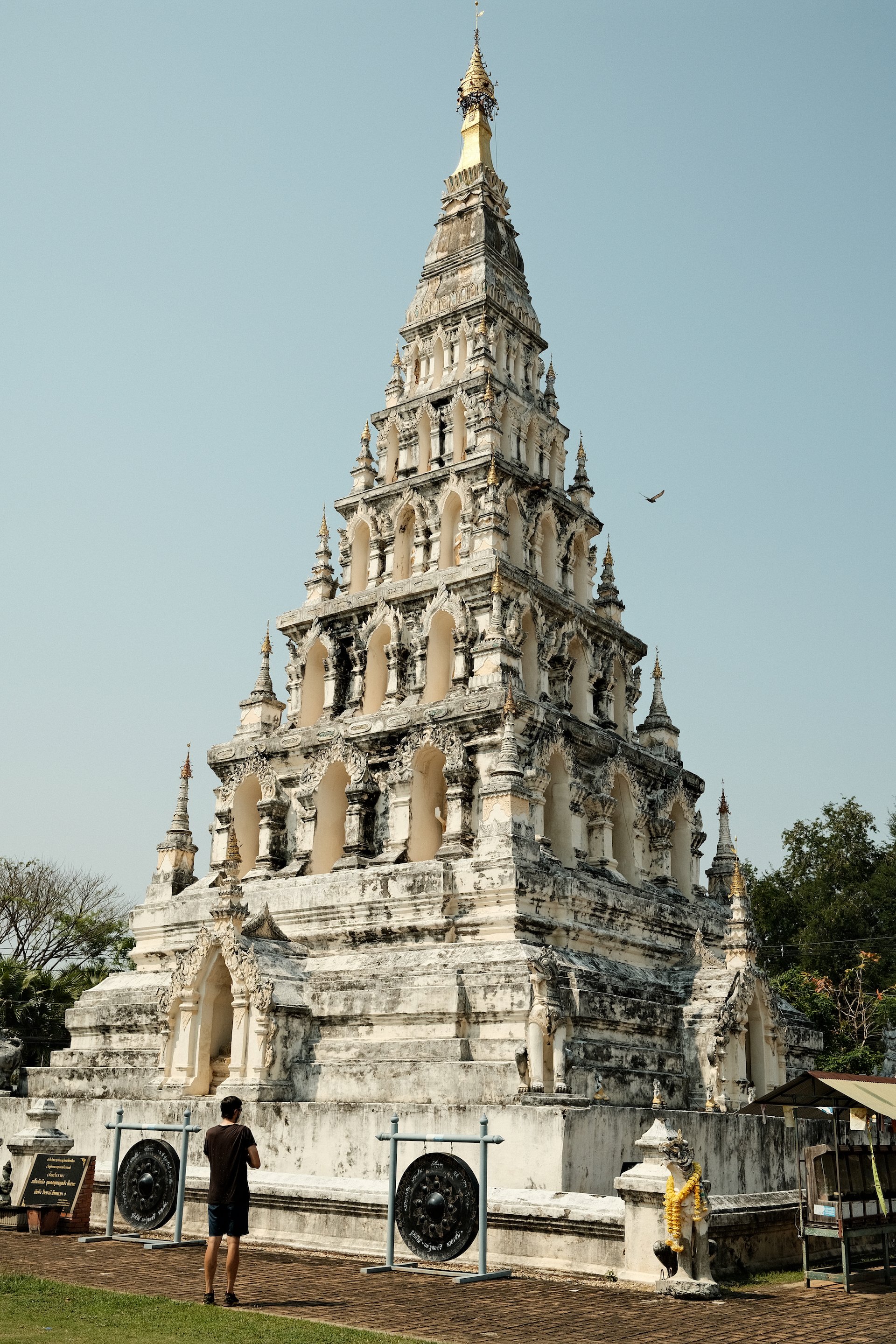
Our final activity in Chiang Mai was perhaps the most anticipated - a day with elephants at a nearby sanctuary. We took a small transport van about an hour outside the city where we learned about elephant habitats, fed them breakfast, washed them in a nearby watering hole, and helped apply a fresh layer of mud to protect them from the heat and bugs. The huge animals were so gentle and playful. They used their trunks, which are impressively powerful and nimble, to precisely pick bananas from our hands and toss them into their mouth. After a breakfast of fruit and palm leaves, we accompanied the elephants on a walk to the watering hole for a morning bath and mud spa. Caitlin and I enjoyed the company of the retired “granny” elephant. She was calm and clever, anticipating the best place to position herself for the next round of snacks.
Our amazing experience at the elephant sanctuary felt like a perfect climax to our travels in Northern Thailand. Along the way, we learned much about the history of Thailand, key stories from the life of the Buddha, and rubbed fresh mud on elephants.

